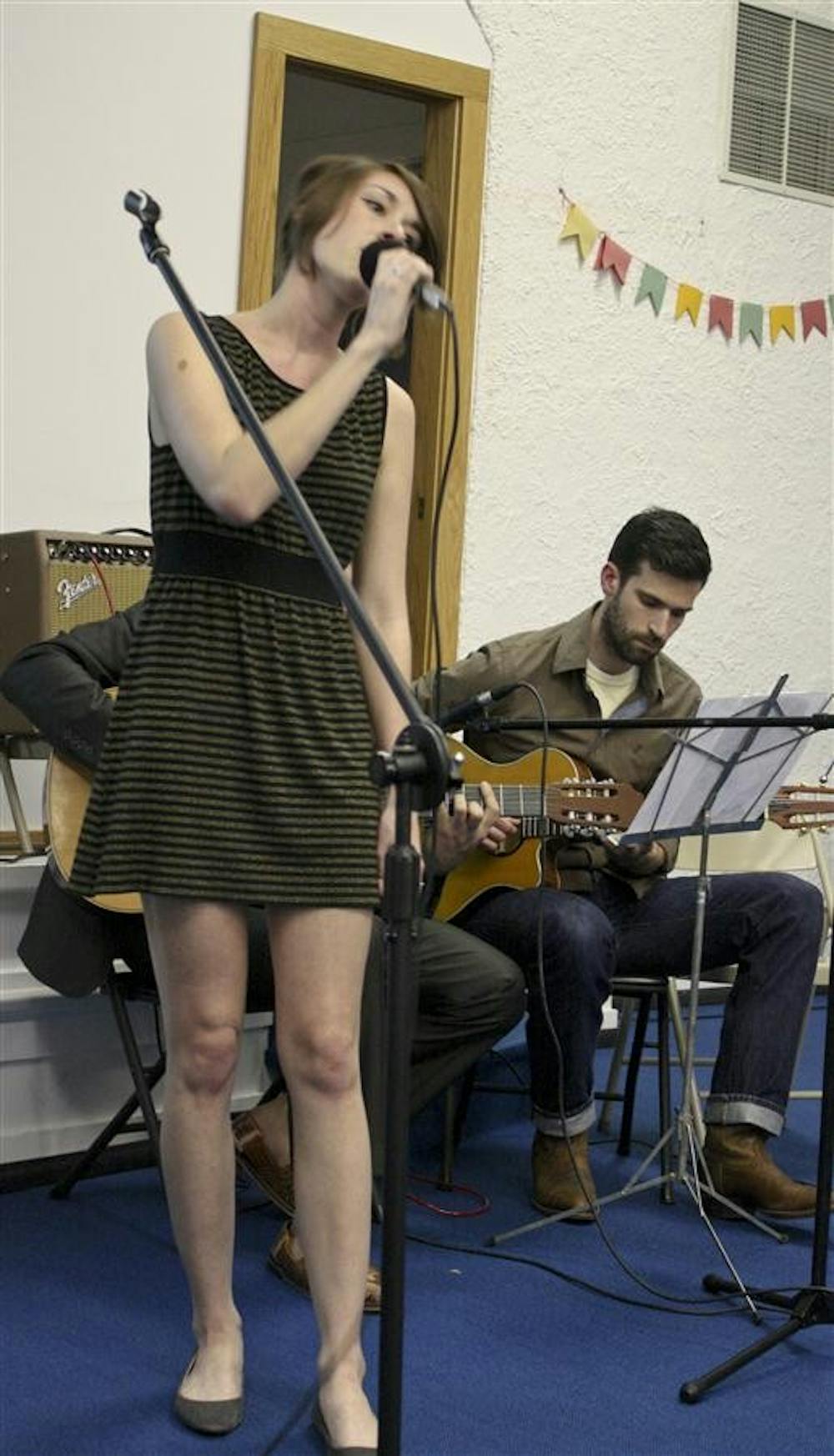Students in the South American Performance and Culture folklore class brought Afro-Peruvian music to the Department of Folklore and Ethnomusicology Performance and Lecture Hall on Wednesday.
“This is basically the final exam for the class,” said Javier Leon, the class’s professor.
Approximately 14 students sang, played instruments and gave brief overviews of different styles of Afro-Peruvian music during the performance.
“This semester we studied the music of coastal Peru with an emphasis on the country’s capital, Lima,” said student and singer Melody Barham.
Barham said the class was a mixture of undergraduate and graduate students.
Half of each class session was dedicated to lecture and learning through readings, videos and listening to songs. The other half consisted of learning and playing the music.
According to the students’ presentation, Afro-Peruvian culture originated from slaves taken to Peru by Spanish colonists. The class focused on criollo culture, which includes music influenced by European and indigenous Peruvians while retaining traditions of Afro-Peruvians, or Peruvians of African decent.
One genre of criollo music is the jarana. Working-class families who lived in the same neighborhoods would gather together to sing the jarana style. As time passed, upper and middle-classes embraced the jarana, and it became a widespread tradition of Peruvian culture.
The students also performed a “potpourri de polkas.”
“This does not mean ‘nice-smelling polka,’” said Philip Lipton, Jacobs School of Music graduate student.
He explained the Peruvian medley of polkas the class played is different from traditional European polkas because the instrumentation includes Spanish castanets and guitar. Lipton also played clarinet in place of a singer.
“The original is several different vocalists,” Lipton said. “What I did was listen to it and try to make it interesting.”
Throughout the performance, members of the class played guitars, electric bass, keyboard and a variety of percussion instruments. Barham, who sang on several songs, said she had to audition and learn to play an instrument for the class.
Other song and dance styles the group performed were the marinera, which is considered the national dance of Peru, as well as the festejo and zamacueca.
The festejo includes heavy percussion and call and response lyrics, and the zamacueca is a couples’ song and dance, often referred to as the “handkerchief dance.”
To conclude the concert, several class members played a unique version of Gershwin’s “Summertime.” Combining the jazz and Afro-Peruvian styles, they demonstrated the Afro-Peruvian revival style that is popular today.
After the invention of the phonograph, the Afro-Peruvian genre changed due to influence of records from Mexico and the United States. The new styles such as jazz were incorporated to form the modern Afro-Peruvian revival style.
“Everyone in the group has some natural talent,” Lipton said.
Folklore class presents Afro-Peruvian music

Get stories like this in your inbox
Subscribe





